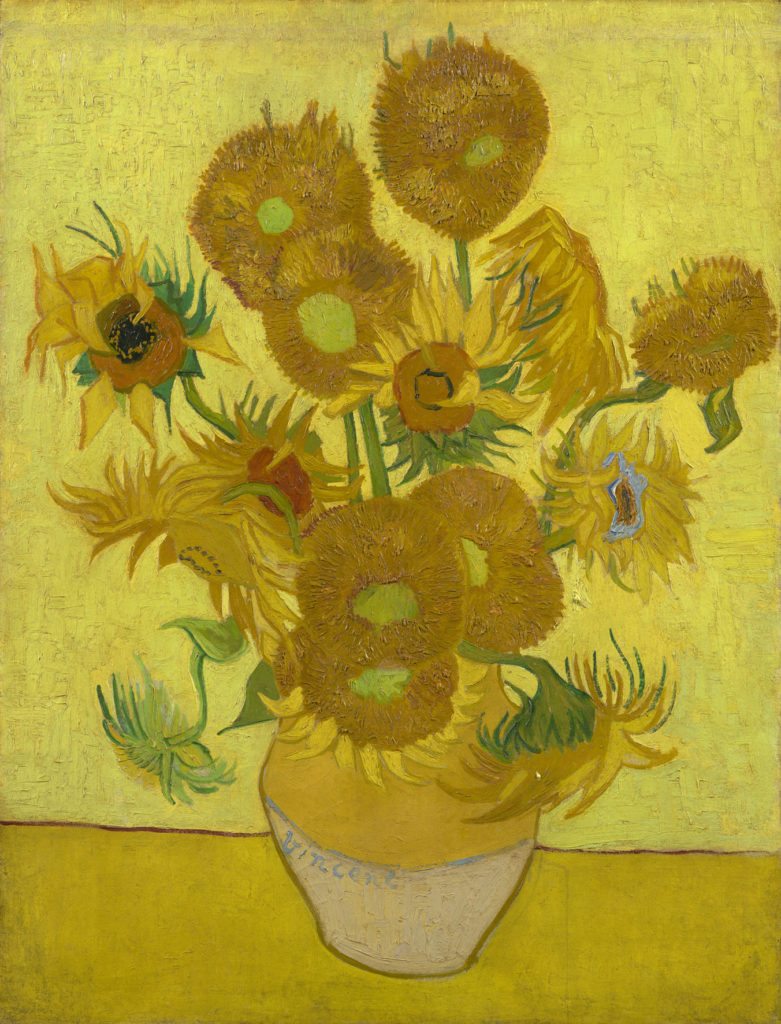“The Sunflowers”: An elaborate game of spot the difference
The National Gallery is usually teeming with visitors, and whilst there is often a surge around particular exhibits, one could be forgiven for questioning why there is such a focus on a secluded wing behind the cloakrooms. The reason is simple. Inside the room, two of Vincent Van Gogh’s Sunflower pieces hang side by side for the first time in sixty five years. The reunion is undoubtedly special and the exhibition reflects this with its depth and detail.
The first painting in The Sunflowers usually resides in London’s National Gallery, the second on loan from the Van Gogh museum in Amsterdam. Their reconciliation allows visitors to compare and contrast the two most closely dated Van Gogh pieces, paving the way for one of the most poignant and artistically reverent games of spot the difference. The paintings themselves seem incredibly similar. When viewed separately however, their rare proximity lends itself to being able to see the intricate differences between the two pieces, creating a new level of understanding of what lies behind the layers of paint. Some of the differences between the two pictures are obvious, such as the difference in size and colours, whereas some differences are far more subtle, such as the change of pigments and brush strokes.
The London and Amsterdam sunflowers were painted in 1888 and 1889 respectively, towards the end of Van Gogh’s life, and are seen as some of his most famous works. Seven individual sunflower paintings were made by the artist, four being originals and three being repetitions of his earlier work. The display shows one of the original pieces and one of the repetitions, adding further context to the differences between the pieces. This gives us a great insight into the artist himself, showing Van Gogh as more than simply an icon of popular culture.
The Sunflowers exhibition still retains the intensity of a larger display despite its size. Stepping into the dim room, there is a silent hush of reverence for the pieces and the context behind them, increased by the fact that the two pieces were painted prior to and then after Van Gogh’s famed mental deterioration. The exhibition must be praised, however, for not paying too much attention to Van Gogh’s health more so than was necessary, as popular culture can sometimes do. The context that is given by the display is informative and relevant. It depicts Van Gogh’s relationship with his friends and his influences behind the paintings, allowing even an artistic novice to understand the exhibition.
The defining aspect of this display is not simply just the artistic prowess of the subjects but also the research provided by the gallery itself. Both paintings have been radiographed and the resulting x-rays hang beside the originals, displaying Van Gogh’s techniques in even more detail. The x-rays allow visitors to admire individual brushstroke patterns and layers of paint upon the canvas, deepening understanding about the works and adding further parallels to the pieces. The extensive research on display regarding pigments and artistic techniques will appeal to both artistic aficionados and novices, as the gallery aims to keep the exhibition as inclusive as possible.
Viewing the exhibition, you are invited to ponder the significance of The Sunflowers and why exactly they are some of Van Gogh’s most appreciated works. Indeed, this exhibition will leave you with a series of questions for themselves and with a greater understanding of the impact of Van Gogh and art in general.
The Sunflowers will be shown at the National Gallery until 27th April.

Comments